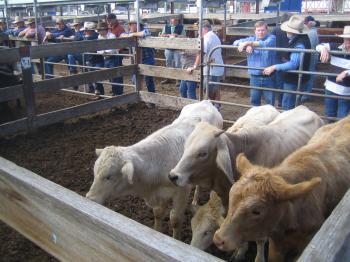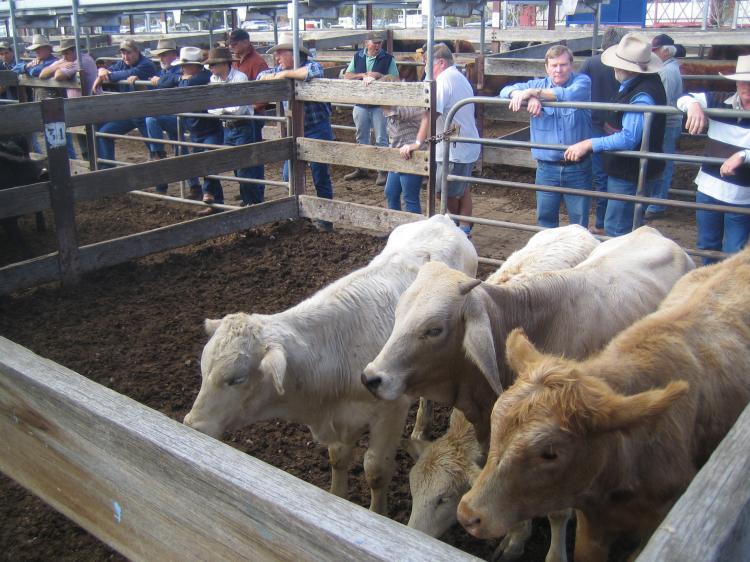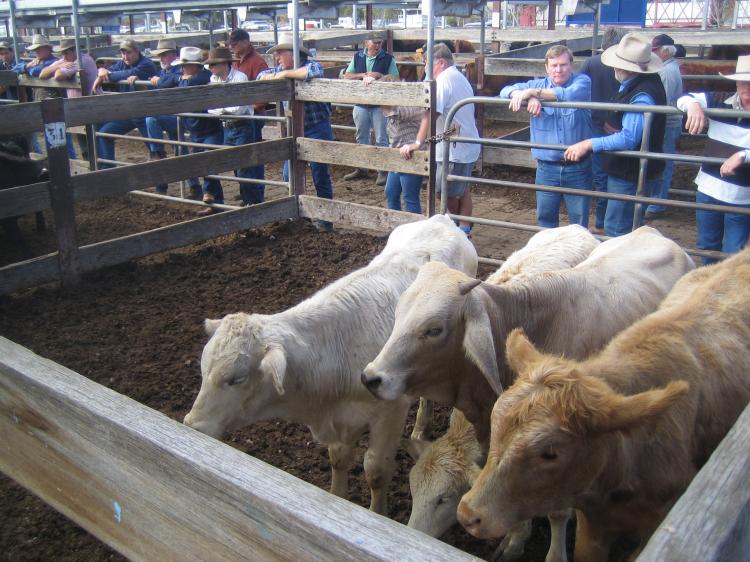A human’s eyes are said to be the window to the soul, but cattle’s eyes may be the window to mad cow disease, according to a new study.
In the journal Analytical Chemistry, Dr. Jacob Petrich and his colleagues at Iowa State University’s Department of Chemistry reported evidence that cattle’s eyes may become the foundation for a long-sought test to detect infection from the agent that leads to mad cow disease. If infected cattle are identified, the disease could be prevented from spreading in the food supply.
“The development of procedures based on examinations of the eye that permit the detection of neurological disorders in animals holds great promise,” the scientists wrote in their research paper.
They noted that the human form of mad cow disease comes from eating meat from cows infected with prions, abnormal proteins that contribute to a series of brain diseases.
Past studies have shown that signs of prions may be found by observing chemical changes in an animal’s retina, a light-sensitive tissue lining the inner surface of the eye.
Taking that into consideration, the researchers showed that sheep’s retinas infected by scrapie, a disease similar to mad cow disease, emit a characteristic glow when seen with a beam of light from a special instrument.
“Our investigations, which have focused on scrapie-positive and scrapie-negative sheep, suggest that the retina is a most promising part of the eye for revealing spectroscopic signatures indicative of neurological disease,” the scientists wrote.
They said that the eye tests could become important in the future for quick and inexpensive diagnosis of prion diseases and other neurological diseases.
“Given our results, we suggest that the distinct differences in the spectral signatures of the retina are diagnostic of animals naturally infected with scrapie,” the scientists wrote. “We further suggest that the eye, and in particular the retina, will be a useful tissue for noninvasive determination of neurological pathologies such as scrapie.”
Read the research paper
In the journal Analytical Chemistry, Dr. Jacob Petrich and his colleagues at Iowa State University’s Department of Chemistry reported evidence that cattle’s eyes may become the foundation for a long-sought test to detect infection from the agent that leads to mad cow disease. If infected cattle are identified, the disease could be prevented from spreading in the food supply.
“The development of procedures based on examinations of the eye that permit the detection of neurological disorders in animals holds great promise,” the scientists wrote in their research paper.
They noted that the human form of mad cow disease comes from eating meat from cows infected with prions, abnormal proteins that contribute to a series of brain diseases.
Past studies have shown that signs of prions may be found by observing chemical changes in an animal’s retina, a light-sensitive tissue lining the inner surface of the eye.
Taking that into consideration, the researchers showed that sheep’s retinas infected by scrapie, a disease similar to mad cow disease, emit a characteristic glow when seen with a beam of light from a special instrument.
“Our investigations, which have focused on scrapie-positive and scrapie-negative sheep, suggest that the retina is a most promising part of the eye for revealing spectroscopic signatures indicative of neurological disease,” the scientists wrote.
They said that the eye tests could become important in the future for quick and inexpensive diagnosis of prion diseases and other neurological diseases.
“Given our results, we suggest that the distinct differences in the spectral signatures of the retina are diagnostic of animals naturally infected with scrapie,” the scientists wrote. “We further suggest that the eye, and in particular the retina, will be a useful tissue for noninvasive determination of neurological pathologies such as scrapie.”
Read the research paper







Friends Read Free